Rustic Garden Fence Ideas: Charming Designs for an Inviting Outdoor Space
Are you looking to add a touch of charm and character to your outdoor space? Rustic garden fences can do just that, blending natural beauty with functionality. They offer a delightful way to define your garden boundaries while enhancing the aesthetics of your yard.
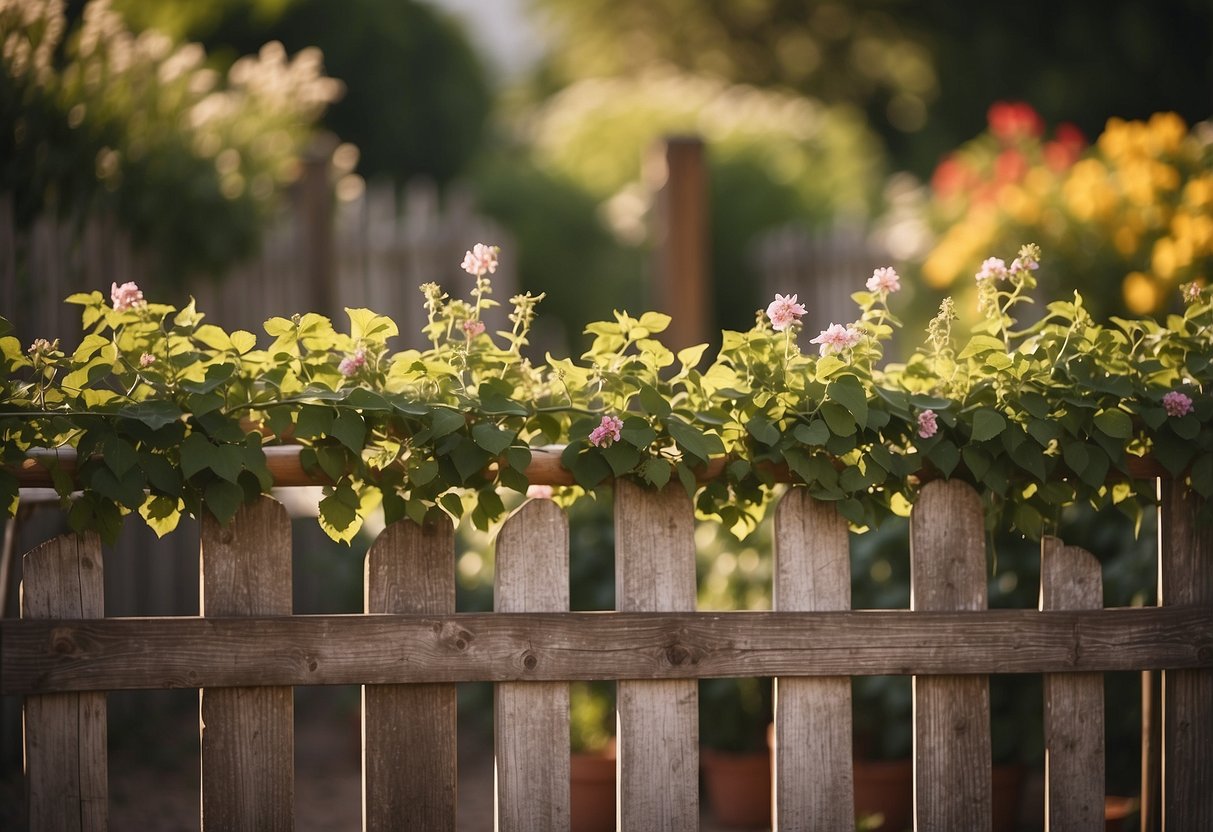
Why choose a rustic garden fence for your home? These fences not only provide privacy and security but also bring a sense of warmth and nostalgia. Whether you prefer weathered wood, woven branches, or classic picket styles, a rustic garden fence can create the perfect backdrop for your garden oasis.
1) Wrought Iron Fencing

Wrought iron fencing adds a touch of elegance to your rustic garden. It’s both strong and stylish, creating a timeless look.
You can find wrought iron in various designs, from simple to ornate. This lets you choose a style that fits your taste and garden’s theme.
Wrought iron is durable and can withstand harsh weather. Though it can be pricey, its longevity makes it a worthwhile investment. For more details, visit The Spruce.
2) Vintage Wooden Pickets

Vintage wooden pickets bring a nostalgic charm to your garden. These fences often feature aged wood that looks naturally weathered, giving your garden a warm, welcoming feel.
You can enhance the vintage look by letting climbing plants, like roses or ivy, weave through the pickets. This creates a timeless, picturesque scene in your backyard. For added character, consider incorporating variations in the picket heights and shapes. This simple touch makes your rustic fence stand out even more.
For more ideas on creating a classic look with picket fences, check out these picket fence ideas.
3) Stone Wall Boundaries
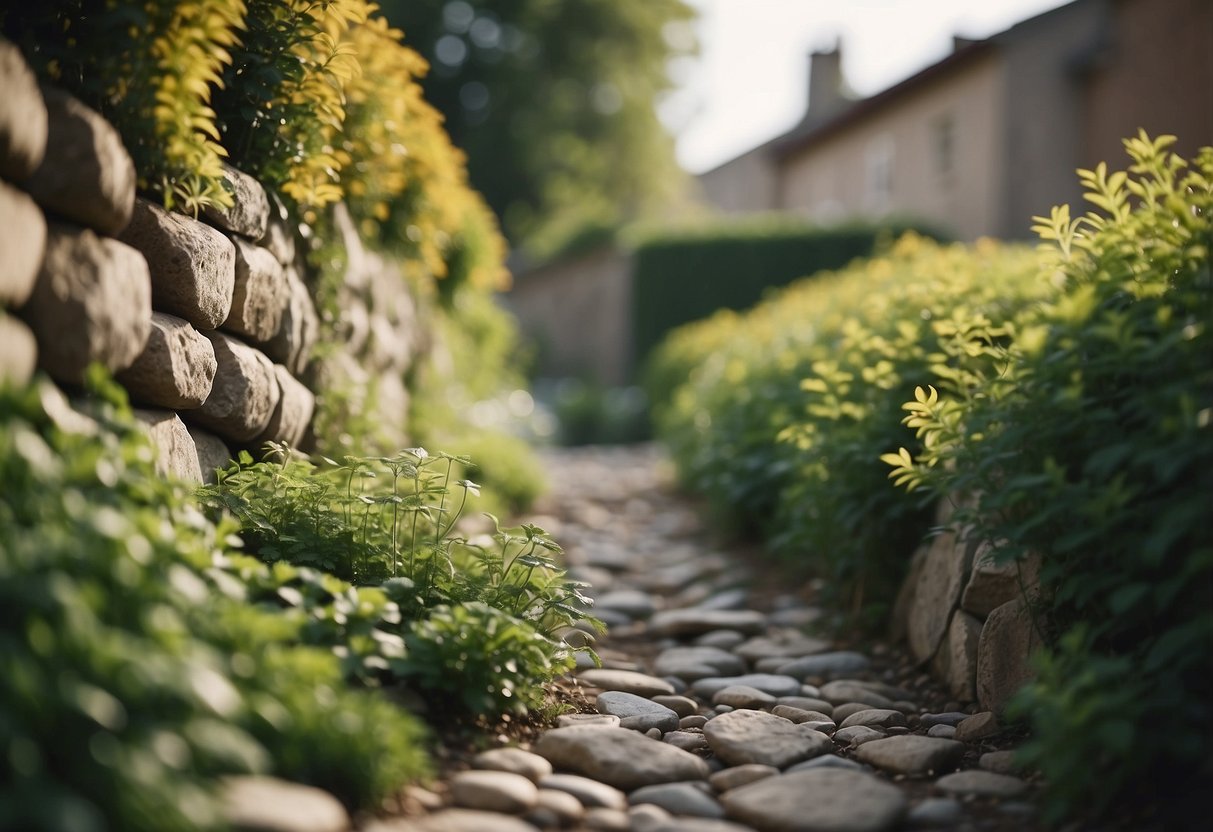
A stone wall is a timeless choice for garden boundaries. These walls, made from locally sourced stones, can give your garden a classic and rustic feel.
You can use flat and uniform stones for easier stacking and a more stable structure. Stones like natural fieldstones or flagstones work well for this purpose.
A stone wall boundary is also low maintenance, needing only occasional checks for stability. For unique stone fence designs, consider mixing different stone types for added character.
This sturdy option can serve as both a boundary and an aesthetically pleasing feature in your garden.
4) Reclaimed Barn Wood Panels
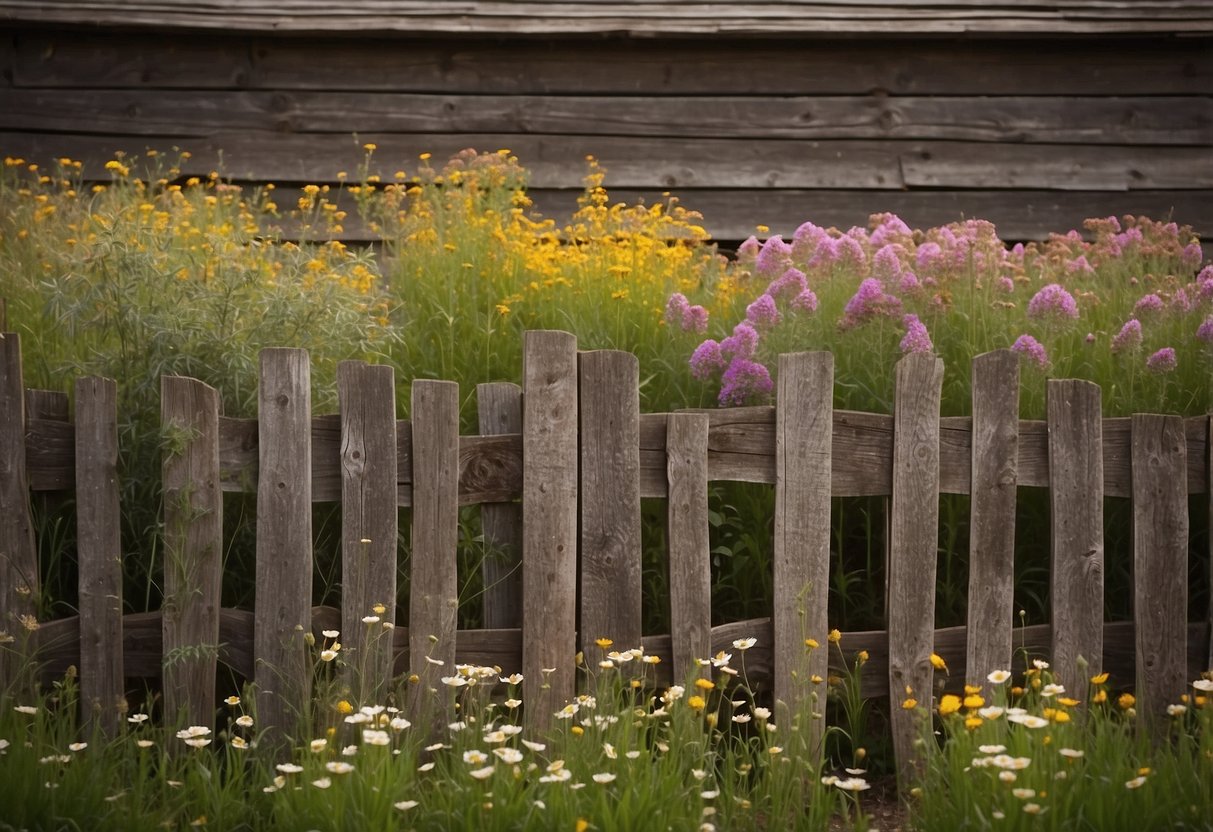
Using reclaimed barn wood panels adds a vintage touch to your garden. These panels not only bring a rustic look but also have a history, enriching your outdoor space with character.
You can start by sanding down the panels to even out any rough spots.
Installing reclaimed barn wood is simple. Attach them to a wooden frame with nails or screws. For more charm, you can mix different shades and textures of the panels.
Consider planting flowers along the base to enhance the natural look. This creates a cozy, welcoming vibe in your garden.
5) Hedge and Shrub Fencing
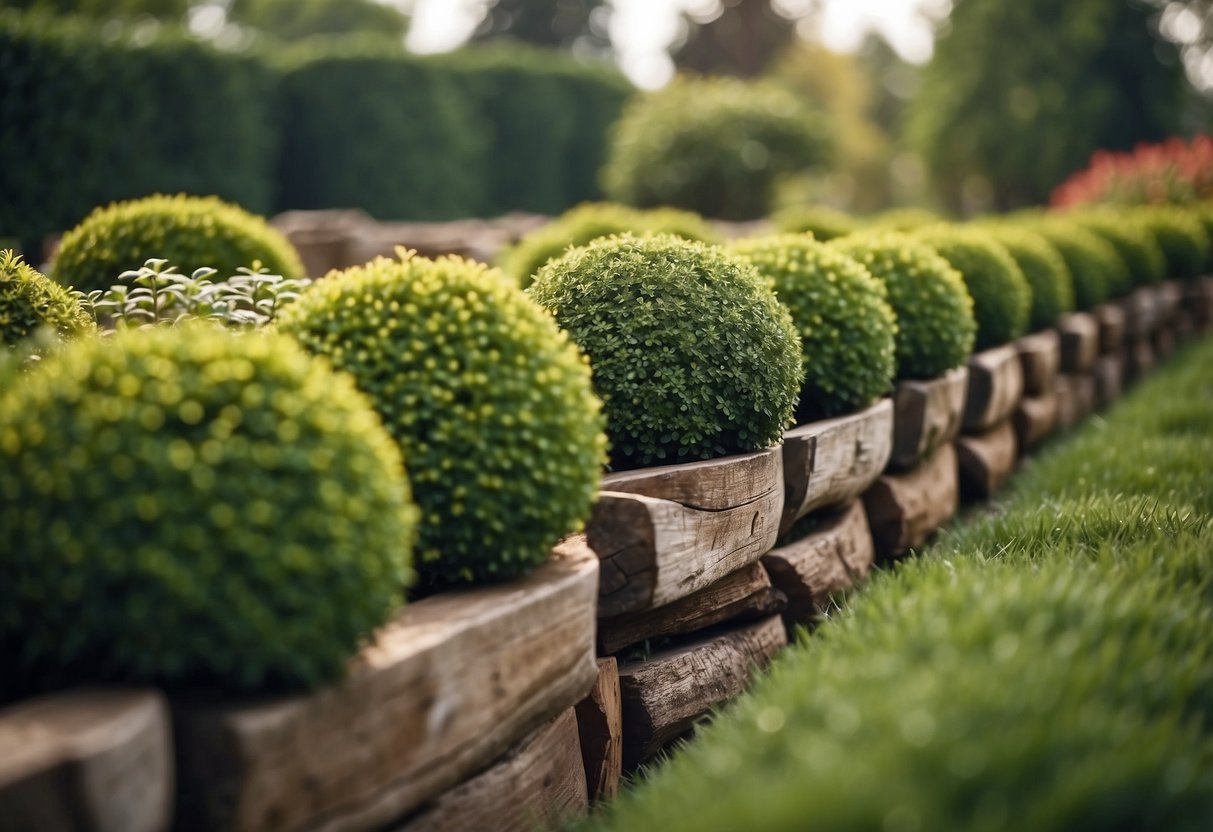
Hedge and shrub fencing creates a living barrier for your garden. Using plants like Canadian hemlock, these fences can grow tall and dense, providing privacy and a natural look.
Unlike traditional fences, these living barriers need regular trimming but offer a greener alternative. They can also attract birds and other wildlife to your garden, adding to the charm and natural feel of your outdoor space.
6) Rustic Metal Panels
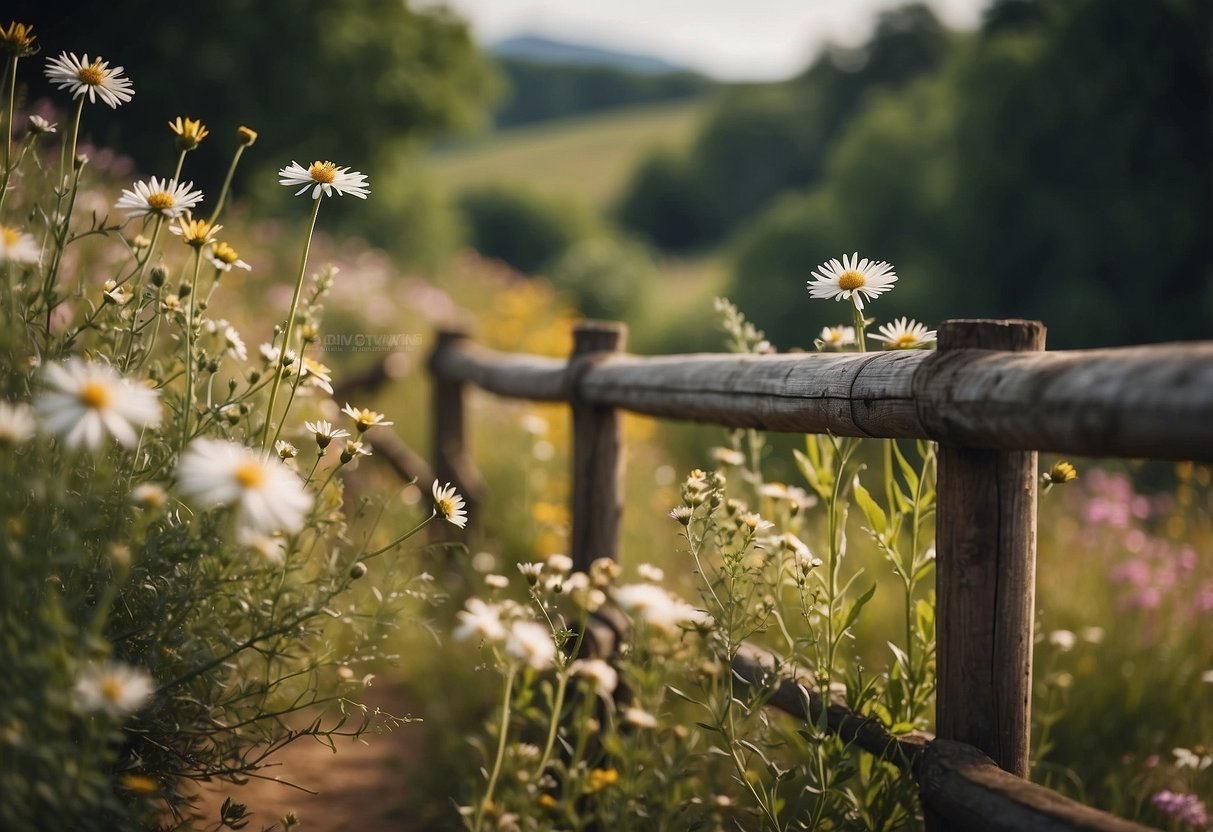
Rustic metal panels can add a unique charm to your garden. These panels often feature intricate designs that stand out beautifully against greenery.
Materials like COR-TEN steel are perfect because they develop a natural rust color over time without corroding, creating a timeless look.
Use these panels as standalone fences or combine them with wood elements for a striking contrast.
7) Handcrafted Willow Hurdles

Handcrafted willow hurdles add a natural, rustic touch to your garden. These fences are made by weaving willow branches around vertical stakes. They blend into any garden setting.
Willow hurdles are not just beautiful; they are also durable and long-lasting. You can use them to separate spaces or add a decorative element.
If you’re interested, check out Winterbourne Willows for bespoke handcrafted options. They offer a range of styles and sizes, so you can find the perfect fit for your garden.
8) Upcycled Door Fence

You can turn old doors into a charming fence for your garden. This unique idea brings character to your outdoor space.
Use different colored doors to add a playful touch. You can find old doors at flea markets or salvage yards.
An upcycled door fence is environmentally friendly. It reuses materials that might otherwise go to waste.
9) Old Tool Fences
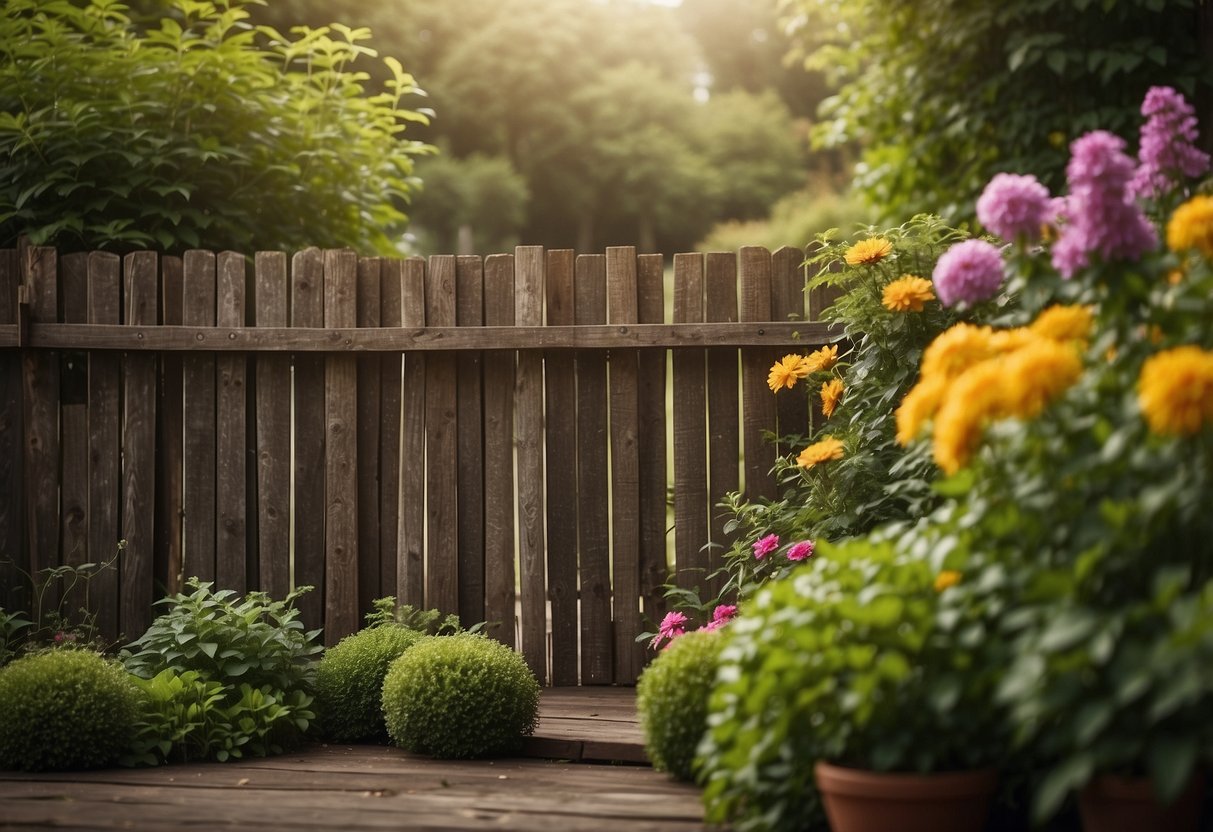
Old tool fences bring a unique charm to your garden. By reusing old garden tools like rakes, hoes, and shovels, you can create a fence that tells a story. Each tool adds personality and character.
Consider hanging the tools vertically or horizontally. You can paint them for a colorful look or leave them rusty for a true rustic feel. This style adds a vintage touch to your garden, transforming it into a functional piece of art.
Adding more rustic details, you can combine old tools with weathered wood for a cohesive look. This mix enhances the natural beauty of your outdoor space.
10) Stone and Timber Combination
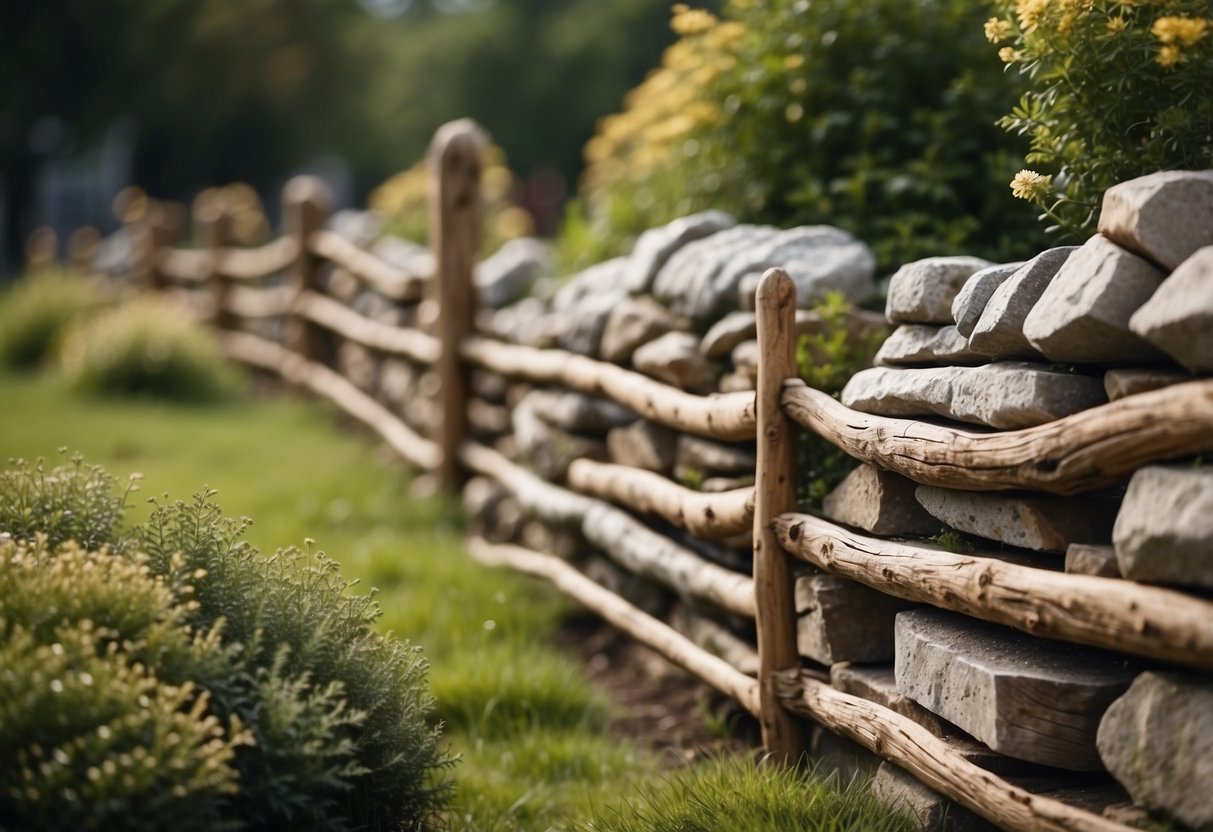
Mixing stone and timber can create a striking rustic fence. The combination brings together the warm, natural feel of wood and the solid, enduring look of stone.
You can use stone for the base and timber for the fence panels. This blend adds texture and interest to your garden space.
Consider locally sourced stones and reclaimed wood for an eco-friendly touch. This method boosts the rustic charm and keeps the design grounded and natural. Get creative and enjoy building a unique fence that stands out.
Understanding Rustic Garden Fences

Rustic garden fences offer a charming and natural look to your outdoor space. They use materials like wood, branches, and twigs to create unique designs that blend well with nature.
Materials Used in Rustic Garden Fences
Wood: One of the most popular materials, wood is available in various styles like weathered, reclaimed, or untreated logs.
Branches and Twigs: These create an earthy look. You can weave them together, making a woven branch fence that adds texture.
Stone: Sometimes, rustic fences use stone for a solid foundation or base. This adds stability and a rustic charm.
Metal Accents: While not always the main material, metal elements add detail and support. Look for wrought iron or aged metal for a rustic feel.
Benefits of a Rustic Garden Fence
Aesthetic Appeal: Rustic fences offer a natural, charming look that enhances any garden. They blend well with plants and trees, creating a peaceful environment.
Durability: Wood and stone are sturdy materials that stand up well to weather. Properly treated wood can last for many years.
Privacy: These fences can provide a sense of seclusion. Whether it’s a high natural wood style, it keeps your garden private without feeling enclosed.
Customizable: You can tailor rustic fences to fit your garden’s style. Whether you like the look of weathered wood or a whimsical twig design, there are many options.
Design Principles for Rustic Garden Fences

When planning your rustic garden fence, consider how to blend natural elements into the design and choose the right height and style to complement your garden’s ambiance.
Integrating Natural Elements
Integrating natural elements can transform your garden fence into a harmonious part of your outdoor space. Use materials like weathered wood or woven branches for a natural, aged appearance. Incorporating climbing plants or hanging baskets can add greenery and life to your fence.
Natural elements such as stone or wood can add texture and depth. Consider leaving some gaps between fence boards to allow vines to weave through. This not only enhances the rustic look but also encourages wildlife, adding an extra touch of nature to your garden.
Reclaimed materials, such as old barn wood or driftwood, can add a personal touch and a story to your fence. These elements make your fence look unique and environmentally friendly.
Choosing the Right Height and Style
Choosing the right height and style for your rustic garden fence ensures it fits your needs and looks great. A low fence, around 3-4 feet high, can define boundaries without blocking views or sunlight. Higher fences, around 6-8 feet high, offer more privacy and security.
Match the fence style to the overall theme of your garden. For instance, a woven branch or split rail fence suits a countryside look, while a log or timber fence fits a wooded or cabin style. Ensure your fence complements your plants and other garden features.
Consider the practical aspects as well. For example, if you have pets or small children, a taller, more secure fence may be necessary. Balance functionality with aesthetics to create a cohesive and practical garden space.
Maintenance and Care Tips

Taking care of your rustic garden fence involves preventing weather damage and following a seasonal care routine to keep it looking its best. Proper maintenance will extend the life of your fence and preserve its charm.
Preventing Weather Damage
To protect your fence from the elements, applying a waterproof sealant is essential. This will help prevent moisture from seeping into the wood, which can cause rotting or warping.
Check for loose nails or screws and tighten them as needed to keep the structure solid.
Inspect your fence regularly for any signs of wear, such as cracks or splinters. Sand down rough spots and apply a fresh coat of paint or stain to keep it looking new.
For areas with heavy rainfall, consider using a weather-resistant wood like cedar or redwood, which naturally withstands moisture better than other types of wood.
A protective barrier such as gravel or mulch around the base of the fence can also help reduce soil moisture contact.
Seasonal Care Guide
Spring is the perfect time to give your fence a thorough cleaning. Use a gentle soap and water mixture to wash away dirt and mildew that may have built up over the winter months.
In the summer, check for any signs of sun damage such as fading or drying out. Applying UV-protective stains or paints can help maintain the fence’s color and strength.
During the fall, remove leaves and other debris that may accumulate around the fence to prevent mold and mildew buildup. Trim back any plants or vines that are growing too close to the fence.
In winter, keep an eye out for snow and ice buildup. Gently brush off heavy snow to prevent strain on the fence. Avoid using harsh chemicals or salt near your fence as these can cause damage to the wood.
Following these seasonal care tips will help ensure your rustic garden fence remains sturdy and attractive throughout the year.







